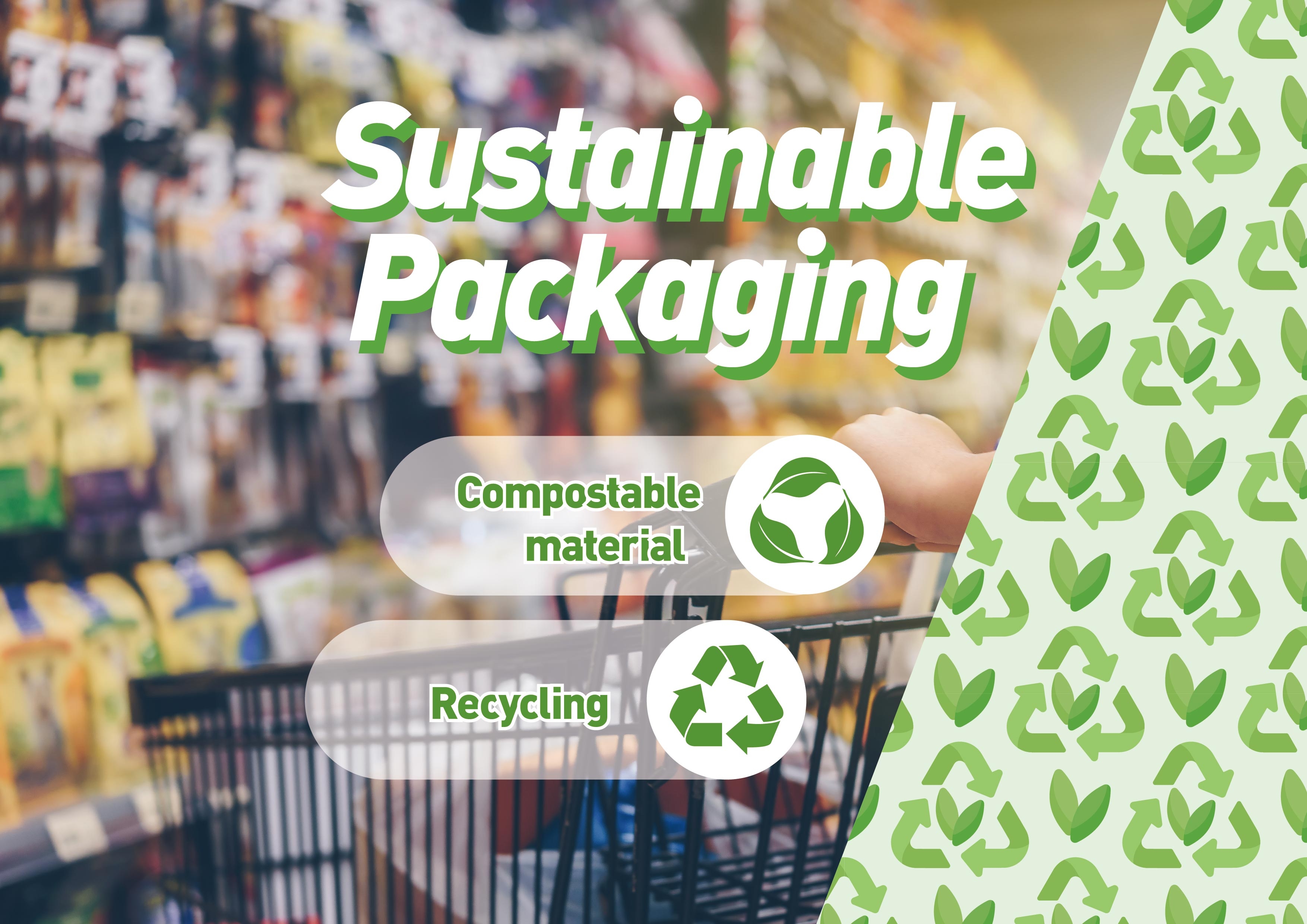What is Sustainable Packaging and Why You Should Care?

Sustainability is meeting the needs of the present without compromising the needs of future generations. Sustainability is about taking people, planet, and profit into consideration in our actions. Packaging is involved in the shipment of products, keeping products fresh and keeping products away from contamination. Packaging is everywhere, as a result much waste has been generated from packaging. Packaging has always played an important role in people’s lives, and we are inseparable from it. The question now is how we can continue to use packaging but at the same time minimize the waste generated from using it so that it does not compromise our future generations. To enjoy the convenience that packaging brings to people, to minimize the impact it has on the planet and to provide the packaging supply chain with reasonable profits. Sustainable packaging can be approached in two ways, one is to use biodegradable material that can disintegrate in the environment, another way is to make packaging recyclable.
Biodegradable material includes eco-friendly materials such as bioplastics. Bioplastics can be made from corn, soybean, wood, sugarcane, and algae. One of the most popular bioplastics is biodegradable PLA (polylactic acid) which is derived from cellulose-based materials such as cornstarch or sugarcane. These materials have similar characteristics to plastic but are biodegradable in compost. They can be molded into hard containers and at the same time into flexible packaging. Another biodegradable material is paper; however, they do not have the water resistance properties and the flexibility of the PLA. Apart from being biodegradable, the benefit of biodegradable packaging like PLA is that it takes 65% less energy to produce than traditional plastics. Therefore, producing less carbon footprint and greenhouse gases. When PLA is decomposed, it breaks down into nutrient-rich materials that can be used as fertilizers in soils. However, the greatest disadvantage is the cost involved in producing it. Biodegradable materials are more expensive to produce when compared to traditional plastics, making it the biggest reason for a step back in their adoption.
Currently, recycling is a more economical solution to sustainable packaging when compared to using biodegradable material. Mature recycling systems are in place for materials such as PET and HDPE plastics. When these materials are sorted correctly for recycling, they can be melted down and remolded to become the raw material for a new packaging cycle. The question is how we can make plastics more easily sorted? In packaging often different materials are laminated together to form a multi-layer substrate. The reason is that different materials have different properties, for instance, the lamination of foil and PE, the lamination of PE and PET. The lamination will ensure the best result when it comes to sealing, resistance and printing of the substrate. However, this multi-layer structure will make recycling much more difficult, since different materials require a different recycling method, it requires taking them apart first before recycling can happen. This adds to the cost and effort involved in recycling. Therefore, more and more companies are now adopting mono-material packaging instead to support recycling. Another big part of recycling in packaging is the recycling of printed ink waste. To have a sustainable printing operation is important as printing is inseparable from packaging. The type of printing method used, and the type of ink used will affect the amount of ink waste that is produced. Currently, the more environmentally friendly printing process is the flexographic printing method using water-based ink. Sustainable flexographic printing can sure the least amount of VOC that is emitted into the air and has the lowest treatment cost for ink waste.
So, what are the big FMCG attitudes towards sustainable packaging and sustainable printing? The Coca Cola company has announced its goal towards making 100% of its packaging recyclable globally by 2025, and to use at least 50% recycled materials in its packaging by 2030. Procter & Gamble(P&G) has announced that they seek to drive greater circularity of their packaging and working towards 100% recyclable or reusable packaging before 2030. To have a 50% reduction in virgin petroleum plastic resin in their consumer packaging before 2030. Unilever has announced that they aim to reduce more than 100K tonnes of virgin plastic and to ensure that 100% of their plastic packaging is designed to be fully reusable, recyclable or biodegradable by 2025. The trend is clear, the big FMCG are all targeting a more sustainable packaging future.
As a packaging and printing business, you should care about sustainable packaging and sustainable printing because this is where your business will be in the future. Not only does FMCG cares about sustainability, but consumers are also supporters of it as well. According to McKinsey & Company consumers have expressed concern about the environmental impact of packaging and are willing to pay more for green packaging. Consumers are interested in recyclable and recycled plastic packaging. Therefore, as packaging converters, you should make sustainable packaging not only available but also apparent to consumers. To be proactive and collaborate with your value chain partners sooner rather than later to develop solutions to sustainable packaging. Finally, sustainability should be taken into consideration along with packaging functionality and packaging production cost. At the end of the day consumers won’t make purchasing decisions based on sustainability alone, but instead taking a combination of factors including sustainability, hygiene, safety, quality, and price.


























